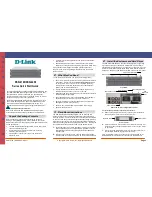
SmartMotion ST355
3. Router Description
SmartMotion ST355 is an industrial cellular router intended for wireless communication
in mobile networks that make use of LTE, HSPA+, UMTS, CDMA, EDGE or GPRS technol-
ogy. The router is equipped with two independent cellular modules for backed up communi-
cation. That’s why SmartMotion router is the ideal solution for the systems with high reliability
needed. The position of the first module is reserved for LTE technology with frequency bands
800, 900, 1800, 2100 and 2600 MHz. The second position can be equipped with a module sup-
porting LTE technology with frequency band 450 MHz. Due to the high speed of data transfer
and the previously mentioned high reliability of communication is this router an ideal solution
for specialized M2M devices and IoT as well as for wireless connection of traffic and security
camera systems, individual computers, LAN networks, automatic teller machines (ATM) and
other self-service terminals.
The standard configuration includes two Ethernet 10/100 ports, one USB 2.0 Host port,
two binary inputs and one output (I/O connector). The device also has four readers for 3 V and
1.8 V SIM cards, which are located on the rear panel of the router. The router also includes
a microSD card port that supports up to 64 GB card storage (32 GB in the case of SDHC
cards). The router can be equipped with a WiFi module, but this must be part of the initial
configuration – it cannot be assembled to the router at some point in the future. The router can
be equipped with PoE PD (Power over Ethernet – Powered Device), which allows the router
to be powered via Ethernet. It can also be equipped with PoE PSE (Power over Ethernet –
Power Source Equipment), which lets the router to power other devices via Ethernet.
Configuration of the router may be done via a password-protected Web interface. Web in-
terface provides detailed statistics about the router’s activities, signal strength, detailed system
log etc. The router supports the creation of VPN tunnels using IPSec, OpenVPN and L2TP
to ensure safe communication. DHCP, NAT, NAT-T, DynDNS, NTP, VRRP, control by SMS,
backup primary connection and many other functions are supported.
The router provides diagnostic functions which include automatically monitoring the PPP
connection, automatic restart in case of connection losses, and a hardware watchdog that
monitors the router status. The user may insert Linux scripts which are started on various
actions. It is possible to create up to four different configurations for the same router. These
configurations can be switched whenever necessary via Web interface, SMS or binary input
status. The router can automatically upgrade its configuration and firmware from your central
server. This allows for mass reconfiguration of numerous routers at the same time.
The router also supports additional software like R-SeeNet for permanent traffic monitoring
of routers.
4











































